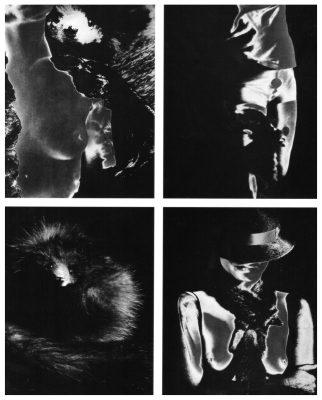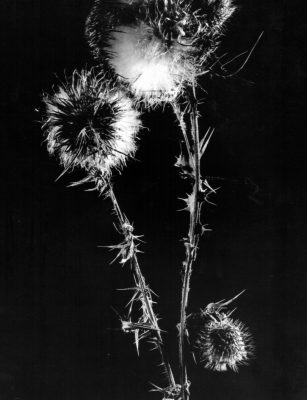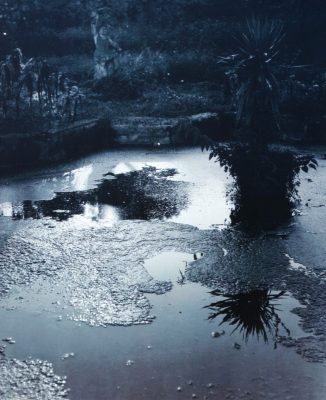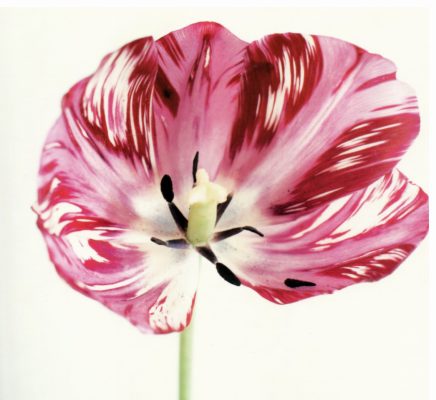Sensitive position finding
Reflections on Photography as a Method of Perception
I want to tell a picture fairy tale
that doesn‘t say “once upon a time”
but rather “that’s how it is”.
Elfriede Mejchar
The fascination with experiencing a subjective perception of present reality in order to reach no more and no less than material certainty through a photographic view, is cultivated by the decisive characteristic feature of Elfriede Mejchar’s multi-faceted oeuvres. Driven by an unquenchable lust for a life in pictures and guided by a certain feel for aesthetic qualities, the intriguing doyenne, whom Otto Breicha affectionately calls the ‘restless retiree’, has in the last five decades created a unique contribution to domestic photographic art. With balanced pictographic designs, composed to the last detail, she was able to create a refreshing program that contrasts with the ubiquitous trends of glamour, intellect and constructs. They belong to the most remarkable domestic creations of the past half-century.
The conditions under which this work of art was created are remarkable as well. Elfriede Mejchar was employed by the Austrian National Office for Historical Buildings and Monuments her entire professional life, under whose commission she photographically documented numerous historical art treasures nation-wide. In the course of her work-related travel, and in the sparse free time available to her, she was able to generate a multitude of artistic works which have one thing in common with the professional documentations: the attentive look, which consistently searches for the peculiarity and uniqueness of the viewed object and still finds living beauty in the incidental moments.
In both cases, she works with relatively neutral as well as monumental picture language, which ennobles the pictured object. A scholar in the archiving of our cultural heritage, but still restricted through the scientific givens she took into consideration, weighed down with experiences of aesthetic perfection, the gifted director of perception turned her attention to everyday occurrences early on. Her main source of interest lay foremost in the status quo, a stock-taking of Vienna’s post-war urban life, which at the same time was formulated as a contest between the possibilities and limits of the medium.
And so the experiments with light and shadow, which were begun around 1950, were already, on the one hand, touching impressions of largely deserted cities. Looking back today, they awaken, thanks to their compositional parsimony and a by now existential appearing symbolism, memories of the days of restoration, in which new spiritual and cultural positions were striven for as well. In these pictorials, people play a subordinate role and are described as anonymous volumina shaped by light and shadow, that are excluded as small and unimportant in the depiction. On the other hand, these early black and white pictures, full of strong contrasts, represent the attempt to draw with light, to trace its refractions and reflections and, when possible, to portrait the light source itself.
The palette of the resulting pictorial representations is abundant: it encompasses the study of a simple glass held against the light, and the toying with the indifferent reflection of the photographer in a clear glass door. It indicates nostalgic street scenes in the light of the late afternoon as well as abstract figures that, upon closer examination, turn out to be fragments of a wire-netting. Despite a clear chronology that can be stylistically followed with the use of light and surface organisation, there is no substantially linear sequence and therefore no narrative correlation to be discerned. The pages may stand alone or can be rearranged over and over again.
To this day, Elfriede Mejchar has remained loyal to working on these kinds of work groups that, as a rule, are not considered continuous narratives, and for lack of a defined conceptual procedure, cannot be considered as a series. With few exceptions, the photographs, assembled respectively in Portfolios, were created over a span of more than two years (whereby extremely long periods of time were not rare either). Between 1965 and 1988, she created idyllic countryside pictures in splitted coloring. These pictures paid tribute to the simple beauty of the quarters, over whose soft hillside landscapes, flanked with old fruit trees, a dramatic cloudy sky spans. In addition, the sensitive eye of the photographer picked out the successive transformations which were brought about through technological advancement. She uncovered the appearance of the industrial society by seeing through the abrupt criss-cross of electrical wires and memorial statues, through the traffic roads and the calm of the woods, and discovering the beauty, the special, and the noteworthy, despite all the disproportionality and ugliness.
With a sleepwalking certainty, she succeeds in crossing the border between art and ‘kitsch’, for despite all of the representation’s obligations in creating distance to its objects, the shaped perception remains. As clear as the testimonies of the documentary and narrative pictorial representations may be, the neutrality of the eye remains aware, the visual attentiveness restrained, and the perspective conspicuously unspectacular. Elfriede Mejchar specifically demonstrates her rare genius in the transparency of her representations. As free as her treatment of various photographic shape methods may appear, the inner-pictorial organisation is – without exception –subtle and with careful attention to the details of the big picture.
Between 1969 and 1975, the puristic nature studies (lavishly conducted using the Äquidensiten -technic), have to do with reduced representations of leaves, blossoms and stems, that were, however, not assembled according to a scientific interest but solely according to whether their aesthetic quality was able to be constructed into a herbary. Elfriede Mejchar’s specific treatment of the motive clearly comes to bear through the softly blurred pictures of the photographs which, laid side by side, were aesthetically perfectly calculated to the last detail, sharp, and structured.
Her photographic eye treats the physically perceptual world to a symmetrical interest and legitimizes even the most insignificant theme as picture-worthy. This places her on a classical grand scale as a creator of art, from the choice of pictures to the lighting to the finishing off of technically perfect realisations. For even if she remains loyal to the practised shape method beyond the progression of the various fashions and tastes, and even if her creations appear pleasantly untimely at the time of their creation, the more many of her works are seen today as more modern and more relevant than many other creations of her once internationally renowned colleagues.
Although Elfriede Mejchar remains relatively constant in her representational methods, she does not develop a coherent style. The search for a universal concept of a kind appears to be to no avail. The continuously changing choice of themes already acts as a preventive measure against the danger of repetition, and necessarily describes the exact timely definable moment through the characteristic quality of the pictured objects as well as the created perception.
However, the subjective preferences for specific themes and genres took a fascinating turn. Of the earlier documentary arrangements, in which the specifications of the medium were already implicitly reflected, the field widens to include the free experimentation with the formation of materials and objects to a media critical reflection: she counters the existing construction of gender roles in the mass-media with the example of the luxurious imagination of the female. Whether she fragmented the ideal typical cliches in a collage-like manner and fixed the picture-fragments into scurrilous, almost surrealistic creations, or presented picture stories with clearly erotic connotations herself, just as in the latest created cycle “Das Pelzchen”, the aesthetic intention is clear and appeals equally to a critical as well as sensual audience.
Seen in this respect, the multi-talented oeuvre accomplishes an historical transformation, in which hardly anything that is relevant for the photography of the 20th century genre remained unnoticed, that is perhaps best described as a ‘pictural turn’. Within a few decades, the photographic picture advanced from copying and creating the real present to becoming a kind of ideal, specifically by converting virtual reality to its derivative. Today the picture world sets the standards and practically offers the software for our perception of everyday life. It also illustrates how we need to arrange the hardware of our physical perception, the physical bodies, and beyond that propagates a total instrumentalisation, in which pictures and signs become equivalent functions of a symbolic trade in an overlapping matrix. The real per se, as well as virtual reality and art define themselves through overvaluing. The creations of the latter alone are expected to be clear, exact, condensed and sublime. A right that, with a pinch of subtle humor, Elfriede Mejchar’s work is entitled to. To spite all trends, which glorify the adulation of the transient, the constant disappearing of pictures, her balanced, motionlessly realised compositions insist on consistency. Without exception, they display an understanding of the structured influence of the photographic medium on the artistic view. Nevertheless, they demonstrate a lively and interesting fondness of the physically perceptual reality. They bring an aesthetic hedonism to light, an unbroken lust for play with the pictures, which the vital and incredibly active photographer continues to indulge in.
Edith Almhofer



